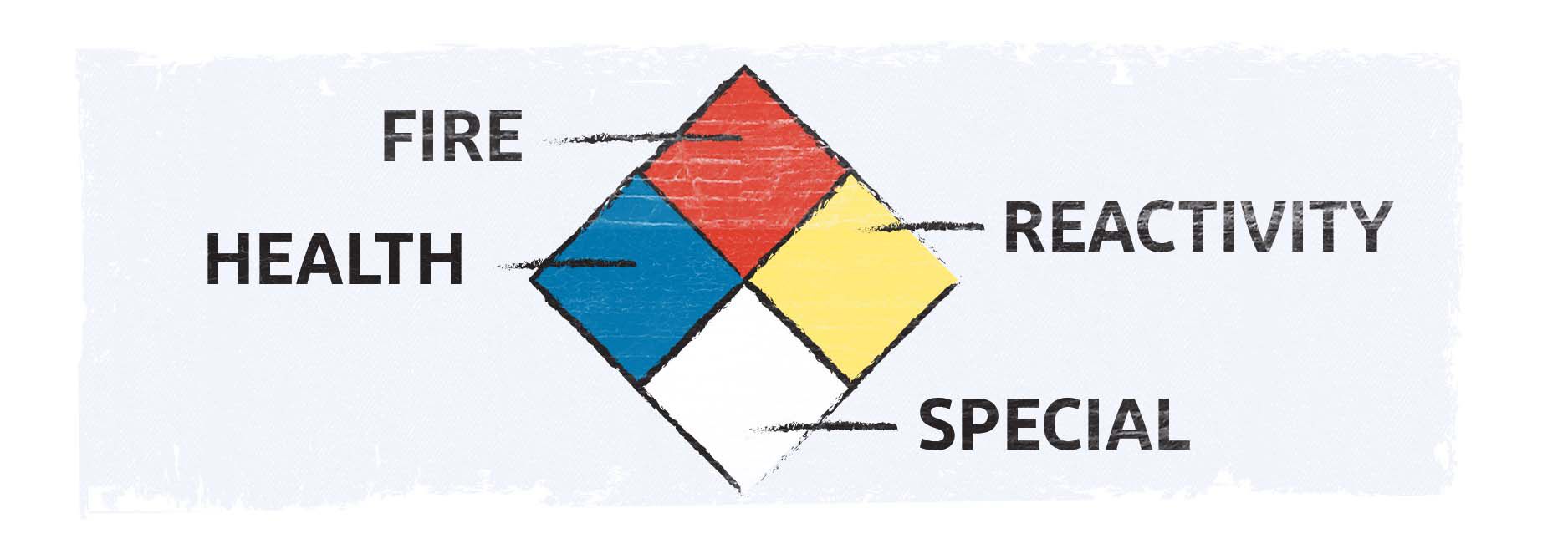Hazmat through history – NFPA hazard diamond
By Daniel Hammel
North America Marketing Lead – Chemical Industrial

The NFPA 704 hazard diamond is seen by millions of people every day, although many of these people probably don’t know what the colors, numbers and special characters signify. But for those who need to know – and do know – the coding, the NFPA hazard diamond provides invaluable information to help keep themselves and others safe from potential hazards.
NFPA 704, first developed by the National Fire Protection Association (NFPA) in 1957, is the American standard for identifying hazardous materials. The goal was to protect the lives of people in various industrial or storage locations where a fire hazard was possible or imminent, and where the surrounding materials’ flammability was not immediately apparent.
Four years later, the NFPA adopted the colored diamond design that we are familiar with today, which helps first responders decipher hazards during an emergency response. The blue, red and yellow sections of the hazard diamond provide a hazard degree rating of 0 (minimal hazard) to 4 (severe hazard). The characters or symbols in the white section of the hazard diamond correlate to a specific hazard. The colored sections of the hazard diamond correspond to the following types of hazards:Modern respiratory protective equipment (RPE) is available for myriad applications and in various forms, including cartridge respirators, powered air purifying respirators (PAPRs) and self-contained breathing apparatus (SCBA), to list just a few. Advancements and innovations continue to be made in the form and function, as they have for the past couple hundred years.
- Red – Fire hazards (from not flammable to highly flammable under normal conditions)
- Blue – Health hazards (from normal material to deadly material)
- Yellow – Reactivity (from stable to may detonate)
- White – Specific hazards (e.g., corrosive, oxidizer or radiation)
What happened between the development of NFPA 704 in 1957 and the adoption of the hazard diamond by NFPA in 1961 that triggered the creation of this highly informative yet simple-to-understand tool?
We can thank a creative fire marshal and an unfortunate incident in Charlotte, North Carolina, in 1959 for the hazard diamond that we see in so many places today. That summer, the Charlotte Fire Department had responded to a former site of the Charlotte Chemical Company. A large vat was burning after being left in a building that was set to be demolished. The firefighters thought the vat contained only kerosene, but in fact, the vat held a substantial amount of metallic sodium sealed in kerosene.
Additionally, heavy rain from a recent hurricane had penetrated the vat, which is what triggered the initial reaction with the metallic sodium and ignited the kerosene. Firefighters initially fought the fire as they would any kerosene fire, but as it continually grew worse, they decided to switch to foam to try to extinguish the fire. Before they could do that, the vat exploded, injuring thirteen firefighters, some severely. Had the firefighters known what was in the vat and understood its reactivity with water, this tragedy may have been avoided. While the events of that day were serious and devastating, they inspired Fire Marshal J. F. Morris to develop the system of diamonds, colors and symbols to identify hazardous materials that we are familiar with today.
To learn more about DuPont products that provide protection against chemical and flame hazards, please visit DuPont™ SafeSPEC™.
